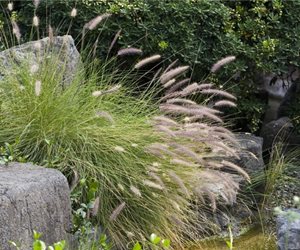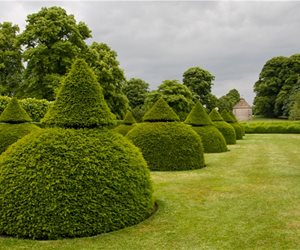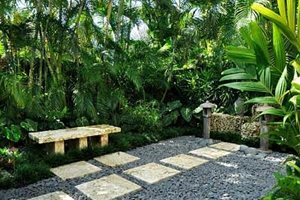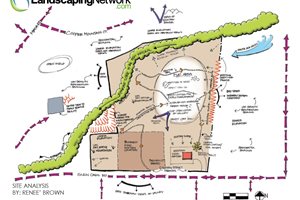Landscape Design Elements
Color, line, texture, form and scale in landscape design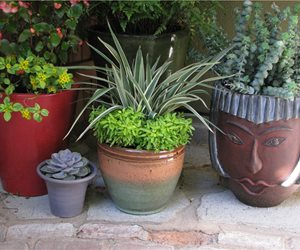
An eclectic mix of pots brings color and personality into the garden. Mayita Dinos Garden Design in Los Angeles, CA..
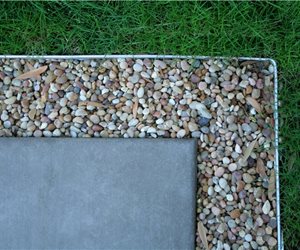
The use of straight lines and right angles in a landscape design will create a contemporary, formal effect. Shades of Green Landscape Architecture in Sausalito, CA
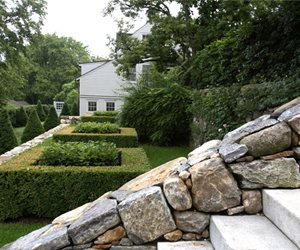
Make sure the scale of your garden is appropriate for the size of your home and its surroundings. APLD 2010 International Landscape Design Gold Award Winner: James Doyle Design Associates in Greenwich, CT; Photo Credit: Neil Landino.
Color
In landscape design, color is crucial. Color brings a garden to life by adding dimension and interest. It can be added with plant material or hardscapes, such as paving, walls or fences. Similar colors can be used to create harmony, while different colors can be used to create contrast. Additionally, warm colors will have a different effect than cool colors. Often, landscapers decide to opt for a color theme that helps unite the entire landscape.
Ways color can be used in a landscape:
- Draw attention to an important feature (fountain, tree, sculpture, etc.)
- Blend the outdoors with the colors of the home
- Attract wildlife
- Provide seasonal variety
- Create a mood
Learn more: Landscape Design Color Theory
-
Pro Tip: Really think before using white in your garden. White flowers scream, 'Look at me!' This draws the eye and makes the rest of the plants disappear. However, if you are trying to create a focal point, white is great.
— Keeyla Meadows, author of Fearless Color Gardens: The Creative Gardener's Guide to Jumping Off the Color Wheel
Line
Often line refers to the structures within a landscape—think of the edges of a walkway or flower bed, or the perimeter of a patio or deck. The way line is employed will greatly impact the flow of a garden. Straight lines and hard angles will create a formal look, while curved lines will create an informal look.
Tips for using line in garden design:
- Vertical lines can be used to pull the eye up and make a space feel larger. Tall trees or an arbor can be used to add vertical lines to a yard.
- Horizontal lines an make a space feel bigger by pulling the eye along the ground. Garden walls, walkways, or small hedges can be used to add horizontal lines to a yard.
Texture
Generally texture is added to a garden with plants. However, texture can also be created using hardscape materials. Plant texture refers to the fineness or coarseness, roughness or smoothness, heaviness or lightness of a particular plant. A plant's flowers, leaves, bark, and branches all have texture. Using plants with different textures is a great way to create variety in a garden.
Form
The shape or structure of a plant or object is its form. What forms are used is dependent on the landscape design theme. For example, a formal garden should have tailored forms such as clipped hedges and topiaries, while an informal garden will have more natural, flowing forms. Trees have distinct forms, so this is a good place to start.
Scale
In outdoor design, scale refers to the size relationship between elements within the garden and the surrounding spaces. As long as you make size choices that are suitable for the setting, the scale of your design will be appropriate. When deciding on the right scale for plants and landscape structures consider the size of your home as well as your available yard space.

 Backyards
Backyards
 Front Yards
Front Yards
